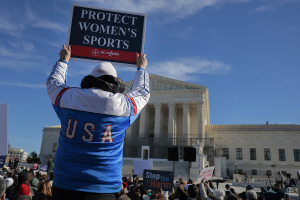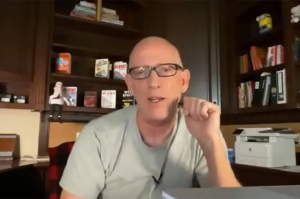Jesus Tomb Case Closed for Most Scholars
A group of scholars posted a statement rejecting the identification of the Talpiot tomb as belonging to Jesus, a week after a conference in Jerusalem revisited evidence on claims presented in the controversial film "Lost Tomb of Jesus."
In a statement posted Monday on the Duke University Religion Department's blog site, key figures in the discovery of the 1980 Talpoit tomb and other experts who attended the conference agreed that most scholars in attendance rejected the claims that the tomb belonged to the author of Christianity, despite the consensus being represented by the media as otherwise.
"We wish to protest the misrepresentation of the conference proceedings in the media, and make it clear that the majority of scholars in attendance – including all of the archaeologists and epigraphers who presented papers relating to the tomb – either reject the identification of the Talpiot tomb as belonging to Jesus' family or find this claim highly unlikely," reads the statement.
Among the scholars who signed the statement were Shimon Gibson of the University of North Carolina at Charlotte, an archaeologist who participated in the dig, Amos Kloner, who supervised the dig, and Duke University professor Eric Meyers, who was among the five panelists in the concluding session.
"It's very unfortunate that a serious meeting of scholars on Jewish belief of the afterlife got so mixed up with media spin," Myers told The Christian Post on Tuesday.
The consensus by the scholars dealt a huge blow to claims made by "The Lost Tomb of Jesus" filmmakers, "Titanic" director James Cameron and Jewish investigative journalist Simcha Jacobovici.
In the film, Cameron and Jacobovici suggested that archaeologists had found the family tomb of Jesus Christ in Jerusalem, challenging most Christians' belief in the bodily resurrection of Jesus from the dead. The duo went further to also suggest that Mary Magdalene was buried in the tomb, that she and Jesus were married, and that an ossuary labeled "Judah son of Jesus" belonged to their alleged son.
The experts – which included archaeologists, statisticians and experts in DNA, ceramics and ancient languages – arrived at their conclusion after five days of testimonies and presentations at last week's conference entitled, "Third Princeton Theological Seminary Symposium on Jewish Views of the Afterlife and Burial Practices in Second Temple Judaism: Evaluating the Talpiot Tomb in Context."
Myers said he was "unalterably" and "unequivocally" opposed to the identification of the East Talpoit tomb as belonging to Jesus.
New Testament Language and Literature Professor James Charlesworth of Princeton Theological Seminary, the conference's organizer, also joined Myers and Gibson in the concluding panel to reject claims that the tomb belonged to Jesus.
While there was no formal vote on the matter, the professor said that virtually all the scholars at the conference held the same views.
Myers, who specializes in archaeology and the history of Second Temple, said there are two main reasons why he rejected the claims put forth by Cameron and Jacobovici.
The first dealt with the statistical analysis presented by Andrey Feuerverger, professor of Mathematics and Statistics at the University of Toronto. Feuerverger had calculated that there was a 1 in 600 chance that the particular cluster of names found on the Talpoit ossuaries would occur in one of the roughly 1,000 tombs discovered so far.
It wasn't the statistical process he used that flagged the analysis for Myers, but it was the Feuerverger information used to calculate those odds.
Most of that information centered around the reading of the inscriptions on the ossuaries which bore the names used in the analysis. One was interpreted to read "Mariemene e Mara" and in some early Christian texts was believed to refer to Mary Magdalene.
But epigraphers at the conference, however, contested the reading as "Mariemene e Mara" – a crucial part of the calculation.
Among them included Stephen Pfann, a biblical scholar at the University of the Holy Land in Jerusalem, who asserted at the conference and in earlier writings said the reading doesn't read "Mariamene" at all but instead "Mariame" and "kai Mara." According to a detailed article he published online last year, he said the ossuary housed the bones of two women, "Mary and Martha."
Citing inferences drawn by Camil Fuchs, head of Tel Aviv University's statistics department, Myers said there is almost no probability that the ossuary belonged to Mary Magdalene.
At the conference, an expert panel of scholars on the subject of Mary in the early church dismissed the link between "Mariamene" and Mary Magdelene. They also firmly rejected the suggestion that Mary Magdalene was married to Jesus and that they had a son.
Pfann also questioned whether the inscription, reportedly reading "Yeshua, the son of Joseph," could even be read.
"These are common names so it's impossible to equate them with familial relationships," commented Myers.
In addition to the problems associated the inscriptions and statistical analysis, Myers also pointed to holes in the analysis of the DNA taken from the bones found in the ossuaries.
Earlier reports indicated that the DNA taken from the bones of the two ossuaries were not related. But Christian theologians were quick to point out there was also no proof that the DNA belonged to Jesus.
In the most recent report, the head of the DNA laboratory at Hebrew University said that the sampling was invalid and contaminated, thereby eliminating any inferences that could be drawn between the non-familial relationship of the bones.
"It was not even worth discussion. That should have closed the case," said Myers of the contaminated DNA.
Myers also denounced a sensationalized remark made by Ruth Gat, the widow of the archaeologists who discovered the Talpiot tomb.
Upon receiving a lifetime achievement award on behalf of Joseph Gat, Ruth Gat said that her late husband always thought the tomb he uncovered belonged to Jesus but never published his opinion from fear of anti-Semitism.
"It's ridiculous," said Myers. "He couldn't read the epigraphy – the study of ancient scripts. He was not a scholar; he was just a technical field archeologist."



























